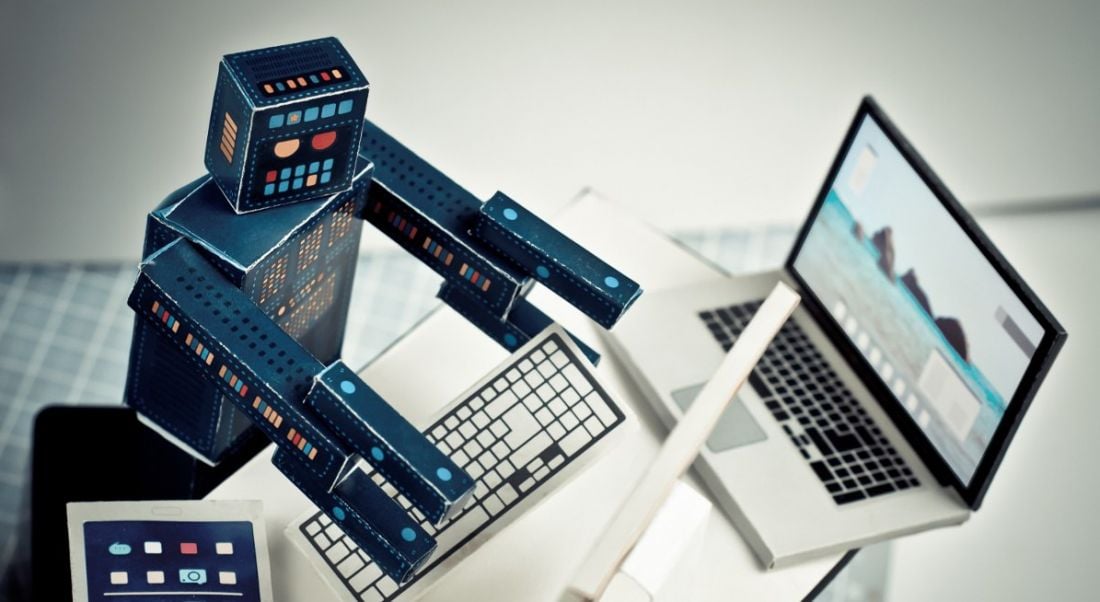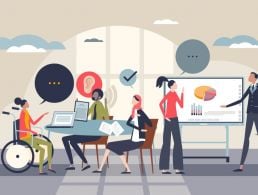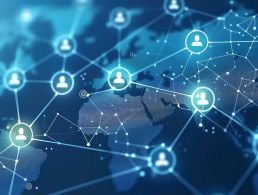Zinier CEO Arka Prava Dhar explores why, in the blended workforce, people should view AI as a coworker rather than a threat.
As the future of work comes to life around us, we’re seeing changes take shape at an unprecedented rate. And with diversity and inclusion becoming more critical than ever, companies are having to adapt to the evolving workforce and its needs.
It’s a topic of major discussion the world over and, with the massive amounts of coverage around how the future workforce will look, it can be challenging to keep up.
One of the most recent additions to the litany of new vocabulary is the ‘blended workforce’.
The blended workforce will bring diversity a step further, gathering humans, AI and automation under one workplace roof.
But what benefits will it bring, and how can we make sure the ‘blending’ is done right?
We spoke to Arka Prava Dhar, CEO at Zinier, to learn more.
‘The most successful businesses will be those that identify the right blend of humans, AI, and automation for their organisation’
– ARKA PRAVA DHAR, ZINIER

Arka Prava Dhar, CEO at Zinier. Image: Zinier
What exactly is a blended workforce?
We’re still in the early stages of understanding how AI and machine learning can be applied in business, but it’s clear that AI-driven automation is changing the standard definition of the ‘workforce’.
With AI and automation, there is a shift toward a ‘blended workforce’ – a workforce consisting of people, AI, and automation, working together to increase productivity.
Have workforces started to become blended already, or is that something we won’t see until further down the line?
We’re already working with multiple companies around the world that are making the leap toward building a blended workforce. Services companies with complex field service organisations are a great example of the blended workforce model, as the ‘last mile’ of any task’s execution must be performed by a human worker.
For example, if an IoT-connected HVAC system reports an error, we can feed that data into our ISAC (Intelligent Service Automation and Control) platform and trigger a work order if the issue is not resolved.
From there, a coordinator can manually schedule the work order, or the system can make recommendations based on field service workers’ availability and inventories.
What are the most beneficial aspects of a blended workforce?
Truck rolls – which refers to the dispatch of a technician in a truck to repair or install a piece of equipment – can cost field service companies anywhere from $250 to $500 per roll. With a blended workforce, unnecessary truck rolls are significantly reduced.
When Zinier’s ISAC platform receives a work order, for example, it assigns the nearest qualified technician and ensures they have the right equipment to complete the work order prior to dispatch.
ISAC can also proactively schedule repairs by analysing past work orders and identifying opportunities for preventative maintenance. For example, instead of waiting for a fuse to burn out, an AI-driven system can determine that it is more cost-effective to proactively replace the part, and if a nearby technician is ahead of schedule and has the appropriate equipment on-hand, the system can automatically create a work order for the technician to perform the needed maintenance.
In scheduling this preventative maintenance, the AI system analyses more data than could ever be handled by humans alone – especially at scale.
Are there still some risks involved, or some things to be mindful of?
Despite significant advancements in the capability of AI systems to augment human jobs, AI isn’t ready to work independently of human intervention.
There will always be the need for human creativity, ingenuity and insight.
What is your advice for companies hoping to implement AI, and workers anticipating more AI in their jobs?
The most successful businesses will be those that identify the right blend of humans, AI, and automation for their organisation.
Introducing a AI-driven automation isn’t just a tech initiative – it’ll require a change in mindset around how to best optimise your workforce and manage service delivery.
Workers should view AI as a coworker, not a threat. AI and automation will help increase productivity and open the door to new opportunities for the human workforce, allowing them to focus on tasks that require a human touch, whether it’s handling unique escalations or managing customer interactions.
This is a prime opportunity for workers to redefine their roles and priorities.




